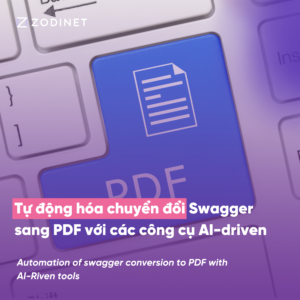What is UAT?
The User Acceptance Testing (UAT) is the final stage of any software development process before the product is officially deployed, commonly known as “User Acceptance Testing.” During the UAT process, the product is evaluated by end users or clients for its ability to meet user needs and provide a satisfactory user experience. The goal is to ensure that the product functions as expected and is accepted for deployment.
So, how can developers optimize the UAT process to save time and resources? Let’s explore the following solutions:
Determining the goals and standards of UAT
Clearly defining UAT objectives from the outset contributes to an efficient and time-effective testing process.
- Clearly defining acceptance criteria not only aids developers in easily identifying user expectations for the product but also helps reduce the risk of conflicts among stakeholders such as developers, users, and managers. This, in turn, contributes to maintaining positive engagement from end-users and stakeholders throughout the UAT process.
- Thoroughly categorizing priority objectives is crucial for prioritizing and focusing on the core aspects of the product. This key step optimizes resources and time during the UAT process.
- Ensuring a consistent testing environment is essential. Developers need to ensure that the UAT team has a clear understanding of testing objectives, criteria, and the product itself. This helps guarantee a consistent and high-quality testing process

Using UAT scripts effectively
A test script can be reused if it is detailed and effective, hence meticulously planning UAT scripts helps developers save a significant amount of time and resources. It also ensures that crucial features of the product are thoroughly tested.
Utilizing test scripts assists the development team in easily assessing the progress of the UAT process, thereby swiftly evaluating the completeness of the application.
Well-planned and clear test scripts help UAT participants avoid unnecessary testing, preventing over-expenditure of time and resources.
Using integrated UAT
Utilizing automated feedback
This is an effective strategy to minimize testing time, increase the repeatability of the process, and simultaneously provide detailed information about the application’s performance. If any issues arise, developers can quickly receive notifications and address them as early as possible.
Prepare the environment for automation, including installing automation tools, configuring system settings, and connecting to the UAT environment. Ensure that this environment accurately reflects the UAT environment as closely as possible.
Continuously assess and improve automated scripts based on feedback and testing results. Optimize the automation process to ensure it meets the requirements and goals of the UAT process.
Organize training sessions for end-users
Training helps end-users gain a better understanding of the application and its features. They learn how to use the application to achieve their job objectives, thereby enabling them to conduct UAT more effectively.
When end-users are trained on using the application and executing test scripts, they have the ability to identify errors or issues that the development team may not notice. This contributes to improving the overall quality of the application.
Once end-users have been trained and feel comfortable with the application, they are more likely to approach the acceptance process with a positive attitude. This convenience can reduce resistance and increase acceptance from users.

Utilizing effective project management tools
Not only UAT but any project requires effective and suitable project management tools to optimize resources and time for developers and management teams.
Project management tools enable you to identify and manage risks during the UAT process. You can assess and prioritize risks while building plans to minimize their impact on the testing process.
In the context of users demanding higher standards for the quality and performance of applications, optimizing the UAT process not only helps save time and resources but also ensures that the final product meets user expectations. UAT is not just the final testing step but also an opportunity to enhance the customer experience with the product and application. The more efficient the UAT process, the higher the likelihood of product success. Therefore, optimizing UAT is a crucial task for developers. By taking specific steps, from clearly defining UAT goals and standards to integrating automation tools and optimizing the testing environment, you can achieve the highest efficiency in the user acceptance testing process



